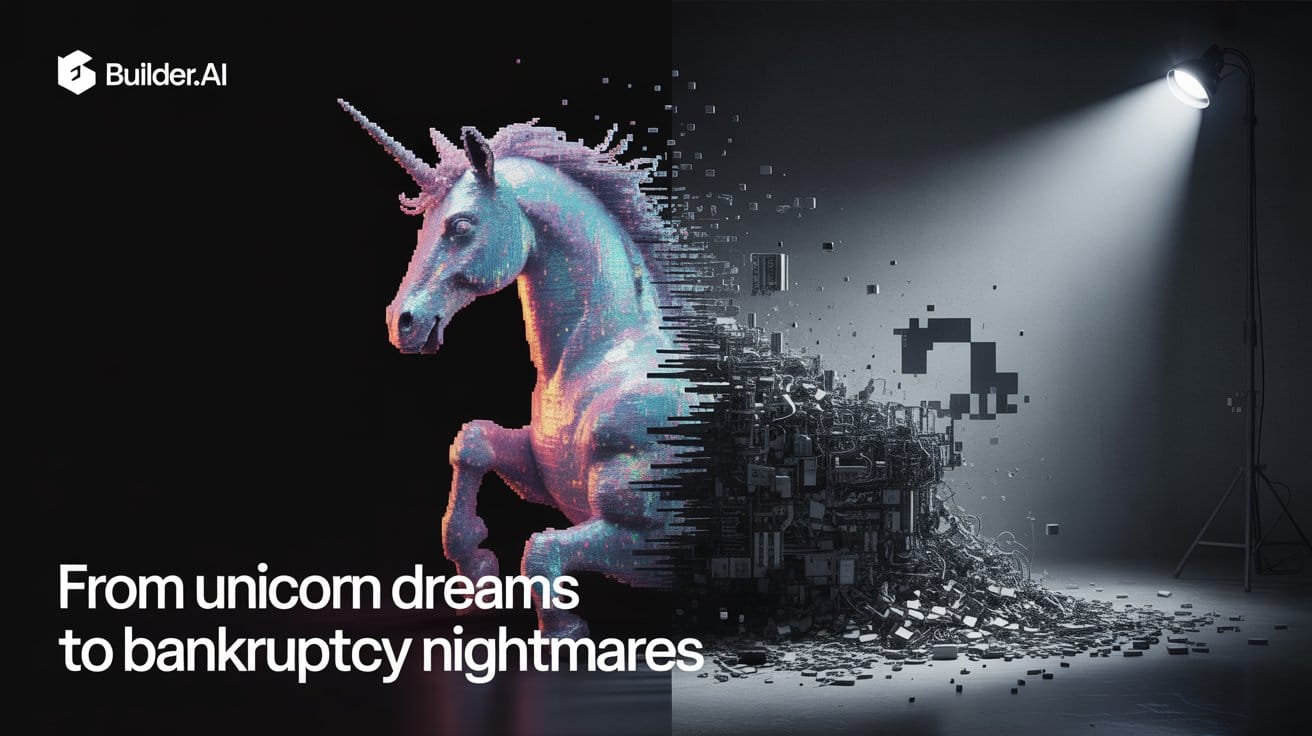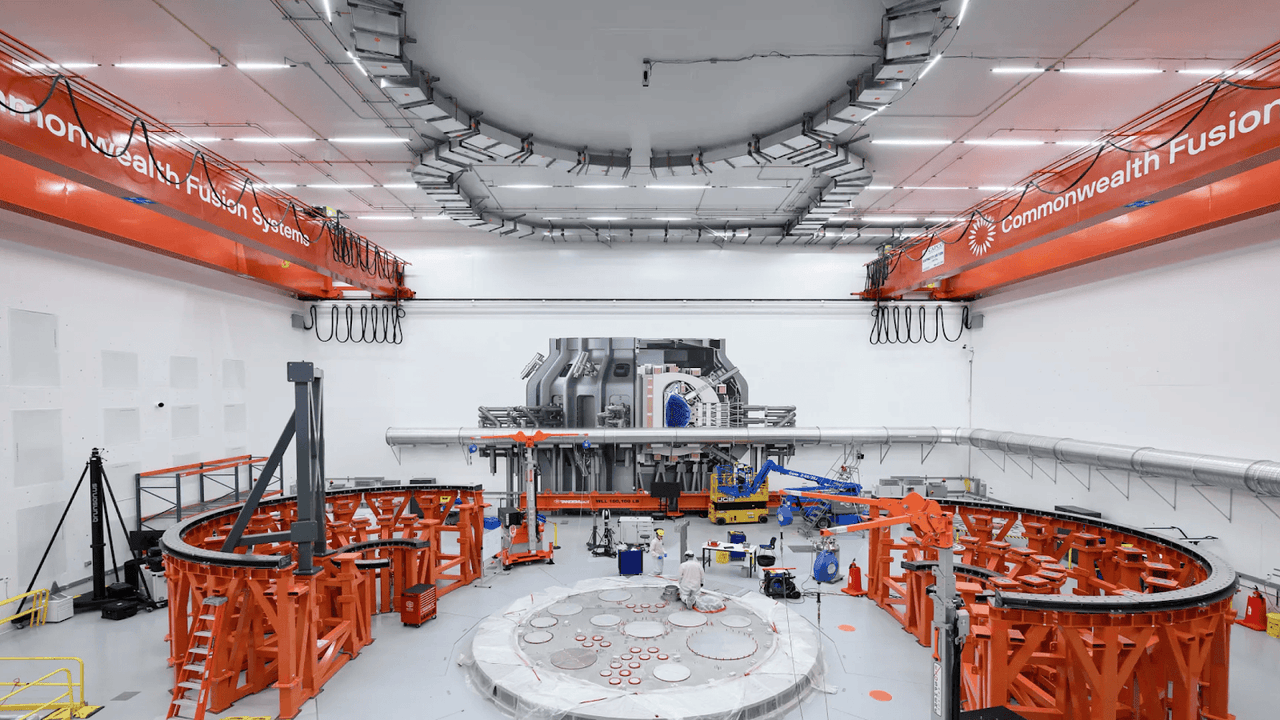Builder.ai's Faked AI: From Unicorn Dreams to Bankruptcy Nightmares

Once upon a time, in the bustling tech hubs of London, Los Angeles, and Delhi, a startup named Builder.ai promised to revolutionize software development. Its bold claim? To make app creation as simple as ordering pizza. With a sprinkle of artificial intelligence (AI) and a dash of investor enthusiasm, Builder.ai quickly became the darling of the no-code/low-code development world. But, like a poorly constructed house of cards, the company collapsed spectacularly in May 2025, leaving behind a trail of shattered dreams, angry creditors, and a cautionary tale for the AI investment frenzy.
Today, we’ll trace Builder.ai’s journey from its establishment to its meteoric rise and eventual bankruptcy.
The Birth of Builder.ai: A Vision of Simplicity
Builder.ai was founded in 2016 by Sachin Dev Duggal and Saurabh Dhoot under the name Engineer.ai. The company’s mission was ambitious yet simple: to democratize software development. Duggal, frustrated with the inefficiencies of traditional coding, envisioned a platform where anyone—regardless of technical expertise—could build custom applications by selecting features from a menu. Think of it as a "Build-a-Bear" workshop for apps.
The platform’s crown jewel was a virtual assistant named "Natasha," who promised to guide users through the app-building process. Powered by AI (allegedly), Natasha was marketed as the ultimate solution to the complexities of software development. The idea was irresistible to investors, who saw Builder.ai as a ticket to the lucrative low-code/no-code market, valued at billions of dollars.
The Meteoric Rise: A Unicorn is Born
Between 2018 and 2023, Builder.ai raised a staggering $445 million in venture capital funding. Heavyweights like Microsoft and the Qatar Investment Authority (QIA) backed the company, lending it an air of legitimacy and prestige. By 2023, Builder.ai had achieved unicorn status, with a valuation of $1.3–$1.5 billion.
The company’s growth was nothing short of explosive. It claimed 300% year-over-year revenue growth in 2022 and expanded its operations across five countries. Its product offerings, such as Builder Cloud and Studio Store, were touted as game-changers in the software development landscape.
But beneath the glossy exterior, cracks were beginning to show. Questions arose about whether Builder.ai’s technology could live up to its hype. Critics pointed out that the platform relied heavily on a hidden human workforce to deliver its services, raising doubts about the "AI" in its name.
The Fall: From Unicorn to Bankruptcy
The first signs of trouble emerged in late 2024 when Builder.ai secured a $50 million credit line to address cash flow issues. The company had projected $220 million in revenue for the year, but the actual figures fell woefully short. By early 2025, Builder.ai’s cash reserves had dwindled to a mere $7 million.
In February 2025, CEO Sachin Dev Duggal was replaced by Manpreet Ratia in a desperate attempt to restore investor confidence. However, the damage was already done. In May 2025, Viola Credit, a major lender, seized $37 million from Builder.ai’s accounts, leaving the company with just $5 million in restricted funds. Unable to pay its employees or creditors, Builder.ai filed for bankruptcy across multiple jurisdictions.
The AI Illusion: Artificial but Not Intelligent
So, what went wrong? At its core, Builder.ai’s collapse was a perfect storm of overhyped promises, financial mismanagement, and a lack of technical verification. The company marketed itself as an AI-driven platform, but much of its work was reportedly done by humans behind the scenes. This revelation not only undermined its credibility but also highlighted the broader issue of AI "hype" in the tech industry.
Builder.ai’s downfall also exposed the regulatory gaps that allowed it to flourish unchecked. Despite raising hundreds of millions of dollars, the company faced little scrutiny over its financial projections and technological claims. Investors, blinded by the allure of AI, failed to perform adequate due diligence. As a result, Builder.ai became yet another cautionary tale in the growing list of AI startups that promised the moon but delivered a black hole.
Lessons Learned: The Need for Verification and Regulation
The story of Builder.ai underscores the urgent need for stricter oversight in the AI sector. Investors must prioritize transparency and technical verification when evaluating AI startups. Claims of "revolutionary" technology should be backed by rigorous testing and independent audits. As one industry expert put it, "AI is not a magic wand; it’s a tool that requires human intelligence to function effectively."
Regulators, too, have a role to play. The rapid pace of AI development has outstripped the ability of lawmakers to keep up, resulting in a patchwork of regulations that vary widely across jurisdictions. A unified approach to AI governance is essential to prevent future Builder.ai-like debacles.
Builder.ai’s rise and fall is a sobering reminder of the dangers of unchecked optimism in the tech world. While the promise of AI is undeniably exciting, it’s crucial to separate genuine innovation from marketing fluff. As the AI investment craze continues, stakeholders must exercise caution, demand accountability, and prioritize ethical practices.
In the end, Builder.ai’s story is not just about a failed startup; it’s a wake-up call for an industry hurtling toward the future at breakneck speed. Let’s hope we’re paying attention.





